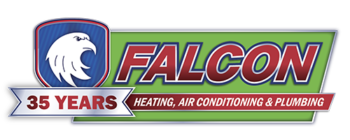When it comes to choosing the right furnace and air conditioning (HVAC) system for your home in the Northern Virginia area, it’s important to understand the different types of systems available and their unique features. HVAC systems are designed to keep your home comfortable year-round, providing both furnace and cooling capabilities. Let’s dive into the four main types of HVAC systems and their pros and cons, with expert insights from Falcon.
1. Central Air Conditioning Systems
Central air conditioning systems are the most common type of HVAC system found in homes with existing ductwork. They consist of an outdoor unit that houses the compressor and condenser, and an indoor unit that contains the evaporator coil. These units are connected by a network of ducts that distribute cooled air throughout your home. Central air conditioning systems are known for their ability to provide consistent cooling in every room.
Pros of Central Air Conditioning Systems:
– Provides even cooling throughout the home.
– Works well with homes that already have ductwork in place.
– Can be used in conjunction with a furnace for year-round furnace and cooling.
Cons of Central Air Conditioning Systems:
– Requires ductwork installation, which can be expensive if not already in place.
– Can have energy loss through ducts if not properly insulated.
2. Ductless Mini-Split Systems
Ductless mini-split systems are a popular choice for homes without existing ductwork or for those looking for zoned, room-by-room, cooling. They consist of an outdoor unit and one or more indoor air handlers that are mounted on walls or ceilings in individual rooms. These air handlers are connected to the outdoor unit by a refrigerant line, eliminating the need for ducts. Each air handler can be controlled separately, allowing for zoned cooling and customized comfort in different rooms.
Pros of Ductless Mini-Split Systems:
– Ideal for homes without existing ductwork.
– Provides zoned cooling, allowing for customized comfort in different rooms.
– Energy-efficient – no energy loss through ducts.
– Ideal for new additions or converted spaces (garage)
Cons of Ductless Mini-Split Systems:
– Can be more expensive upfront compared to central air conditioning systems.
– May not be aesthetically appealing to some homeowners due to the visible indoor air handlers.
3. Heat Pump Systems
Heat pump systems are versatile HVAC systems that can provide both furnace and cooling. They work by transferring heat between the indoors and outdoors using electricity, making them energy-efficient and environmentally friendly. Heat pumps are ideal for moderate climates like Northern Virginia, where the temperature rarely drops below freezing.
Pros of Heat Pump Systems:
– Provides both furnace and cooling in one system.
– Energy-efficient, as they transfer heat instead of generating it.
– Can be used year-round for consistent comfort.
Cons of Heat Pump Systems:
– May need a backup heat source for extremely cold days.
4. Furnace Systems
Furnace systems are traditional furnace systems that use natural gas, oil, or electricity to generate heat. They are typically paired with central air conditioning systems to provide both furnace and cooling capabilities. Furnaces are known for their ability to quickly and effectively heat homes, making them ideal for colder climates.
Pros of Furnace Systems:
– Provides efficient furnace during cold winter months.
– Can be paired with central air conditioning systems for year-round comfort.
– Suitable for homes with existing ductwork.
Cons of Furnace Systems:
– Requires a separate system for cooling.
– May require a chimney.
If you’re unsure about which HVAC system is best for your home or if you need professional installation or maintenance services, don’t hesitate to reach out to Falcon, your trusted HVAC and plumbing company in the Northern Virginia area.
Don’t compromise on your home’s comfort and energy efficiency. Contact Falcon today at (703) 596-9998 to schedule a service and ensure your HVAC system is operating at its best performance!

